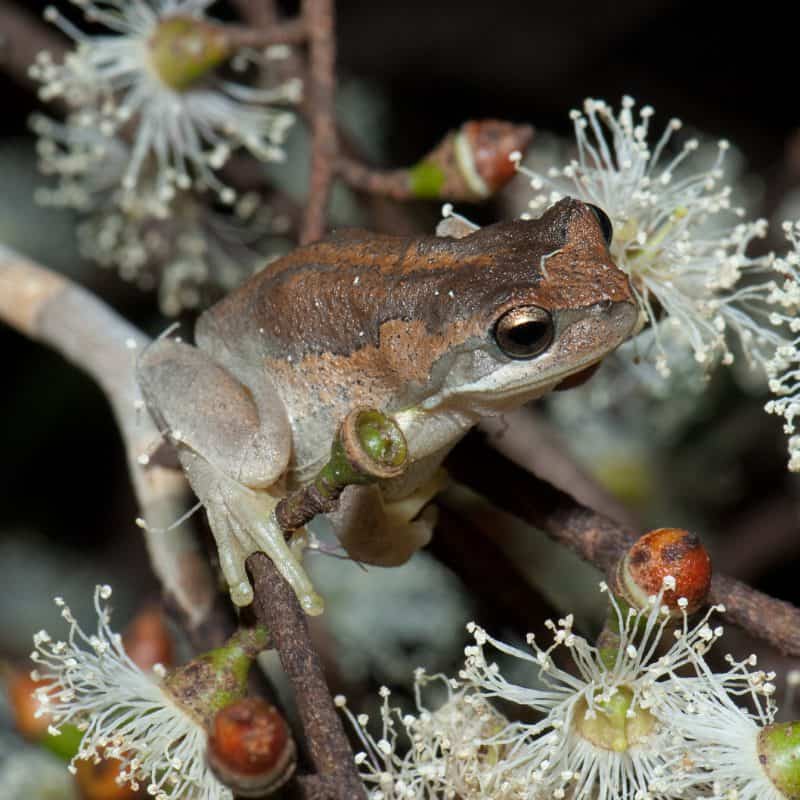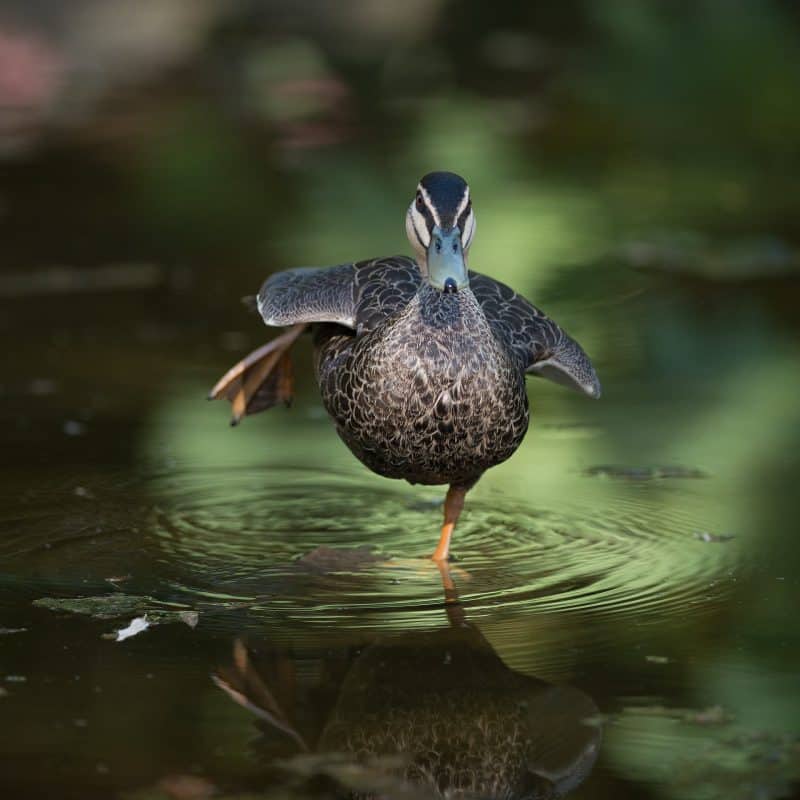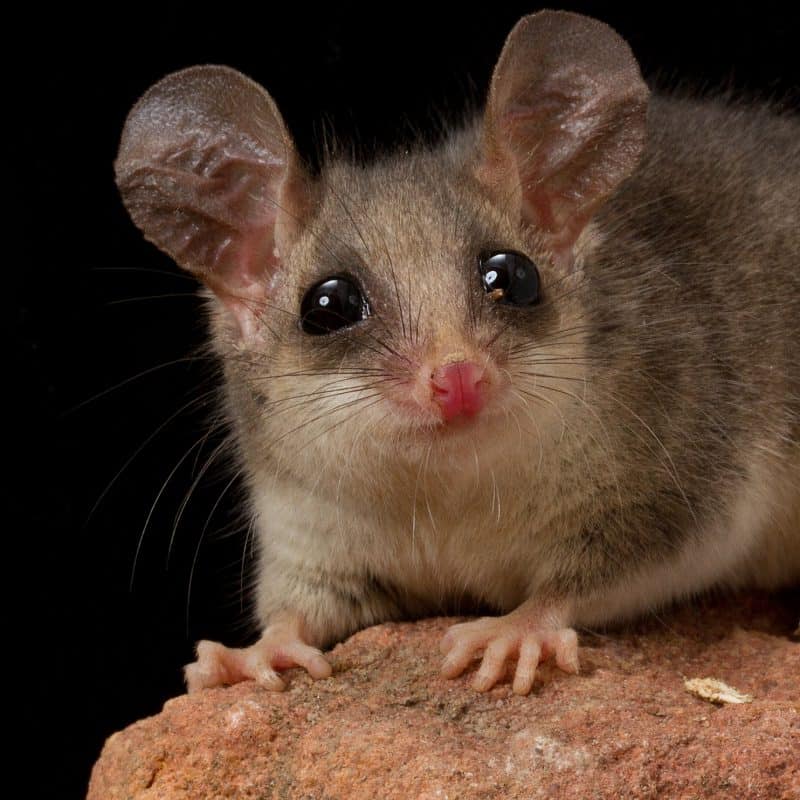The 2019-20 Black Summer bushfires burnt more than 1.25 million hectares of forest across eastern Victoria, killing millions of wildlife.
A year on, the animals and plants spared from the flames face another challenge for survival.
Significant unburnt forests – critical refuge areas for threatened and endangered wildlife – are under imminent threat from logging.
It is shocking and deeply disappointing that the Victorian Government has allowed its state-owned logging company VicForests to plunder the remaining forests.
Victorian National Parks Association, along with community conservation groups from East Gippsland, commissioned an analysis of the impacts of the bushfires and ongoing logging, released this week in our report After The Fires: Protecting Our Forest Refuges.
We found that across ten ‘critical refuge areas’ identified, 553 logging coupes covering over 20,000 hectares of forest are planned for logging in the coming months to years by VicForests.
There have been no reductions or substantive changes to existing logging plans since the bushfires – in fact, there have been two additional logging schedules approved in the past 12 months. However, the Victorian Government has not yet moved to provide any new protections for threatened animals like the Greater Glider or Sooty Owl.
Despite the ongoing warnings and recommendations by scientists, the Environment Department, and the Office of the Conservation Regulator, logging continues in these critical refuge areas and other high-conservation value forests since the fires.
Some animals only found in East Gippsland’s forests had close to 80% of their home ranges burnt, much at high severity, and many rare plant species had 50-100% of their known range impacted by fire. For most of the bushfire-affected threatened species focused on in the After The Fires report, logging is listed as a major threat to their already precarious survival.
Iconic species like the threatened Glossy Black Cockatoo and Spot-tailed Quoll are still struggling to hold on in the aftermath.
They need us to demand that the destruction of their remaining small, fragmented homes stops right now.
Our After The Fires report makes five headline recommendations:
- Protect each of the key refuges identified in this report and any other remaining unburnt forests from current and future logging to ensure the survival and persistence of flora and fauna species that rely on these forests to survive.
- Commit to not logging any identified habitat remaining in Victoria for each threatened species significantly affected by the 2019–20 bushfires, particular those identified in this report.
- Bring forward the 2030 transition out of native forest logging.
- Prioritise funding and restoration of areas impacted by the bushfires to restore habitat and provide better resources for weed and pest control programs in forest areas to improve recovery from bushfire events.
- Declare and map the key refuges identified in this report as high priority assets in need of protection from all types of future fires, including planned burns.
Tell the Victorian Government to take immediate and decisive action to stop the ongoing logging of these critical refuge areas.
We must speak up for the plants and animals who depend on these remaining forests for their recovery and very survival.
We’ll send the following message on your behalf. You can include your own words for more impact.
Dear Premier Andrews, Minister D’Ambrosio and Macedon Member Thomas,
I write to you today about one of Victoria’s greatest assets – our stunningly beautiful and incredibly biologically diverse forests of Eastern Victoria. These awe-inspiring forests are home to unique native plants and animals found nowhere else on earth. Our Eastern forests are truly beloved by Victorians.
Which is why it caused us such grief that they were devastated by the 2019-20 Black Summer fires.
Now I am alarmed and dismayed by reports that significant unburnt areas – critical refuge areas for threatened and endangered wildlife spared from the brunt of the fires – are now being subject to extensive logging plans.
This requires immediate, decisive action from the Andrews Government.
Analysis of the 2019–20 bushfire spatial data reveals that more than 1.25 million hectares of forest burnt across the three most heavily impacted Forest Management Areas (FMAs): East Gippsland, North-East and Tambo.
More than 200 flora species have had 50–100% of their extent affected by the fires. Of these 154 have been identified by the Department of Environment, Land, Water and Planning as of high concern due to fire impacts.
DELWP has also identified 67 fauna species of most concern, with 20 species having between 50–80% of their distribution within the fire extent.
A report produced by conservation groups After the fires: protecting our forest refuges, clearly shows this (read report: www.vnpa.org.au/after-the-fires-report).
It highlights ten iconic East Gippsland areas which form some of the last refuges for eastern Victoria’s most precious plant and animal species and ecological communities.
The ten areas focused on in the report include Errinundra, Cottonwood, Cabbage Tree, Far East Gippsland, Swifts Creek, Nunniong, Colquhoun, Mt Alfred, Sardine Creek to Bemm, and the North-East Alpine Region
Many of these unburnt and lightly burnt refuge areas contain extremely valuable and rich habitat features essential for the rehabilitation, recruitment and dispersal of wildlife into recovering forests.
Across the ten refuge areas, 553 logging coupes covering more than 20,000 hectares are planned for logging in the coming months to years by the Victorian Government’s logging agency VicForests.
The science on the impact of logging in native forest on threatened and endangered wildlife is solid – and is damning.
For most of the bushfire-affected threatened species focused on in the report, logging is listed as a major threat to their already precarious survival.
After the 2019-20 bushfires DELWP released two reports on the impacts of the fires, which identify the importance of protecting key refuge areas for fire-affected species. But neither of these reports actually identified key refuge areas or adequately addressed the continued threat of logging on forests health and threatened plants and animals. DELWP’s recent Threatened Species and Communities Risk Assessment further highlights the need for implementing interim protection for important species and communities in fire impact areas.
In May 2020 the Office of the Conservation Regulator made recommendations that logging should not go ahead in key refuge areas for threatened species due to risk of irreversible damage to biodiversity after the 2019-20 bushfires. Scientists from the Threatened Species Recovery Hub made recommendations in January 2020 following the bushfires to locate and protect key refuge areas which “will be of profound importance for species’ recovery, and hence should be the immediate and ongoing focus for conservation management.”
Despite these ongoing warnings from scientists, and against the recommendations of the Chief Conservation Regulator, logging has recommenced in these refuge areas following the disastrous bushfires.
We welcome and congratulate the Victorian Government’s ready and fast commitment to post-fire investments for land managers such as Parks Victoria to conduct pest management and aerial-seeding efforts in fire-affected Alpine areas. But these actions are undermined by continued logging in unburnt forests and in key refuge areas identified as critical for the survival of threatened plant and animal species impacted by the fires.
With this knowledge I support the recommendations of the After the Fires report, and call your government and departments to act on the science and implement the following recommendations:
- Protect each of the key refuges identified in this report and any other remaining unburnt forests from current and future logging to ensure the survival and persistence of flora and fauna species that rely on these forests to survive.For example, protect the remaining 90,000 hectares of unprotected state forest in East Gippsland that is outside the fire extent. Action to protect these areas would be largely in line with DELWP’s bushfire response planning and the recent Threatened Species and Communities Risk Assessment.
- Commit to not logging any identified habitat remaining in Victoria for each threatened species significantly affected by the 2019-20 bushfires, particularly those species listed in the After the Fires report. Many of the species listed in the report are set to have their conservation status upgraded in the next 24 months. Protecting any remaining habitat from logging while this process is undertaken is a critical first step to giving these species the best chance of recovery. There are many options for both interim and permanent protection, which should be considered.
- Bring forward the 2030 transition out of native forest logging. In November 2019 the Victorian Government committed to a decade-long transition out of native forest logging. This would stop the devastating impact on high conservation-value forests and wildlife while supporting and transitioning impacted workers.
- Prioritise funding and restoration of areas impacted by the bushfires to restore habitat and provide better resources for weed and pest control programs in forest areas to improve recovery from bushfire events. We acknowledge that there has been investment in this area as part of bushfire recovery, and hope to see these important programs continued and enhanced over the long-term.
- Declare and map the key refuges identified in this report as high priority assets in need of protection from all types of future fires, including planned burns. This could include changes to Fire Management Zoning or other measures over the mid- to long-term to ensure forest recovery across the landscape.
Logging has already commenced in some of the key refuge areas outlined in the After the Fires report as well as other high-conservation value areas since the fires.
We do not want this destruction to be allowed to continue.
These forests must be protected for the survival of threatened plant and animal species devastated by the fires.
I call on you and your government to act on the science and immediately cease the ongoing logging of these last unburnt and lightly burnt areas.
I believe the Andrews Government needs to show decisive and meaningful action now to protect our Eastern forests – and ensure these jewels of Victoria’s crown continue to shine brightly into the future.


